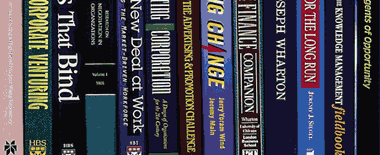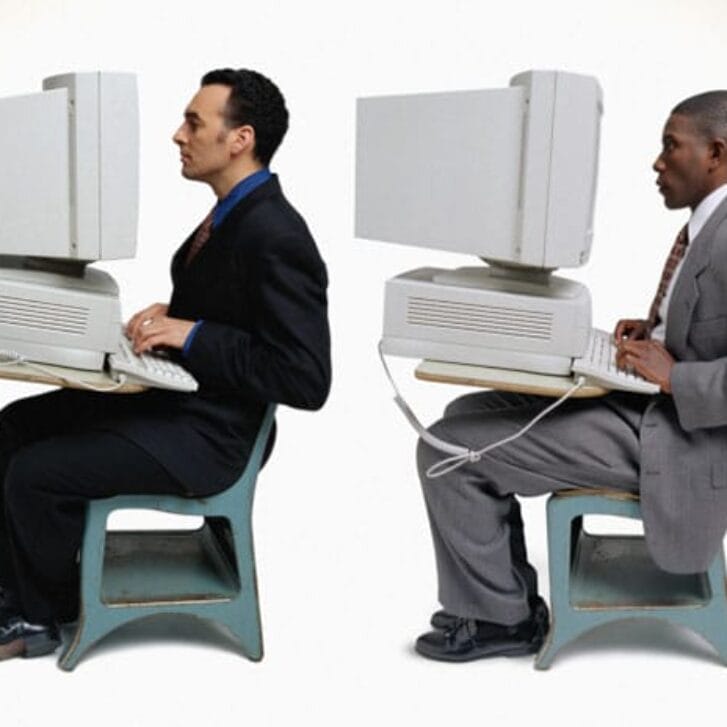Speed and Adaptation, not Microplanning, Are Critical to Success in New Economy
Established companies increasingly find themselves struggling to keep up with the frenetic pace and intense competition of the new economy. Today, their conventional ways simply don’t give them the mobility necessary to survive. Are they doomed to failure? Not necessarily.
Co-authored by Wharton professor Ian C. MacMillan and Columbia University professor Rita Gunther McGrath, The Entrepreneurial Mindset: Strategies for Continuously Creating Opportunity in an Age of Uncertainty (Harvard Business School Press) offers a practical guide for thriving in an environment that is fast-paced and highly uncertain. To succeed today, traditional managers must adopt an entrepreneurial mindset. Like successful entrepreneurs, they must create opportunity from uncertainty. In the following Q&A, MacMillan, the Fred R. Sullivan Professor of Management and director of the Sol C. Snider Entrepreneurial Research Center, discusses these new realities of business and the insights his book provides.
Why is studying and understanding the actions of habitual entrepreneurs a key to success in business today?
Macmillan: Managers of companies that are wrestling with fast-moving competition and high-velocity, turbulent environments find that traditional planning simply doesn’t work anymore. The days when senior managers decreed and everyone else followed are over. You can no longer use rigid hierarchical structures, long planning cycles or traditional budgeting processes. In such an uncertain environment, you need new ways to plan and strategize. It’s vital to constantly innovate if you are to adapt to the change that’s taking place. It’s all about speed and adaptation instead of microplanning.
And this is precisely how entrepreneurs, particularly habitual entrepreneurs, behave. Habitual entrepreneurs are people who started not just one, but many businesses, successfully. If you look at many one-time entrepreneurs, their second business is often a disaster. Frequently the reason they were successful is not good management, but good luck. On the other hand, someone who has started many businesses successfully has created a template for starting businesses. It is their pattern of decision making – the way that habitual entrepreneurs identify opportunities, and then select them and assemble resources – that is interesting to us.
Habitual entrepreneurs often have the ability to forge powerful but simple solutions where others see only complexity. They embrace learning by taking small, calculated risks, and rather than analyzing to death they can recognize what’s roughly right and take action. But it’s their ability to create opportunity from uncertainty that makes them so successful in the new economy. And it’s this entrepreneurial strategy of embracing uncertainty that can help other companies compete and survive in this fast-paced business environment.
How can a manager foster an entrepreneurial mindset within a company?
MacMillan: The basic way is through management’s expectations. People need to understand that you expect them to keep looking for innovative ideas and that you will give them the tools to do this. The tough thing is that you can’t pursue every idea, only those that pay off. It takes a lot of personal time and personal attention to pressure people to keep thinking up new ideas and then help them understand why you are only going to choose the very best ideas. If you don’t help them understand that there is a discipline involved, they expect all their ideas to be implemented just because they had them. And not all good ideas make good business sense.
The book discusses at length the idea of managing uncertainty. Can you share some insights about this issue?
 MacMillan: The entrepreneurial leader is able to absorb uncertainty for people so they’re not penalized by it. The basic idea is to say, ‘The world is uncertain. It is my judgement that this is the direction it is going to be heading, that X is going to happen, not Y. Let me worry about whether it does or does not happen. I’ll absorb the uncertainty.’ What people need to understand is that if they are told to assume that world X is going to happen, you may come back later and say, ‘Look, I’m sorry that it isn’t X; you’re now going to have to assume it’s Y.’ They can’t look to you to be prophets, but they can look to you to absorb the uncertainty and give them direction. This is enormously liberating for them – if you don’t absorb uncertainty for them, many people freeze in the headlights.
MacMillan: The entrepreneurial leader is able to absorb uncertainty for people so they’re not penalized by it. The basic idea is to say, ‘The world is uncertain. It is my judgement that this is the direction it is going to be heading, that X is going to happen, not Y. Let me worry about whether it does or does not happen. I’ll absorb the uncertainty.’ What people need to understand is that if they are told to assume that world X is going to happen, you may come back later and say, ‘Look, I’m sorry that it isn’t X; you’re now going to have to assume it’s Y.’ They can’t look to you to be prophets, but they can look to you to absorb the uncertainty and give them direction. This is enormously liberating for them – if you don’t absorb uncertainty for them, many people freeze in the headlights.
What distinguishes the ideas in your book from previous research on entrepreneurship?
MacMillan: The important thing is the context. This book is not about being an entrepreneur; it’s about creating an entrepreneurial organization, irrespective of its age and size. It’s about surviving in a world of uncertainty. The days when strategy meant careful analysis and careful planning and trying to outthink your competitors are over. Today, you need to be able to position yourself to grasp opportunity and exploit it quickly. Thus, the concept of strategy is shifting from analytical strategies to much more opportunistic strategies.
What are the key takeaways in your book?
MacMillan: Entrepreneurial thinking is not an option. It has become a necessity in even the largest organizations. The leader’s responsibility is to nurture and encourage entrepreneurial thinking throughout the entire workforce.
A Different Game: Giving Leaders the Tools to Manage Emerging Technologies
By Robert Gunther
 Emerging technologies such as the Internet and biotechnology are changing the world. But beneath the hype and anecdote, what do we really know about managing emerging technologies? Earlier this year, a team of Wharton faculty from the Wharton Emerging Technologies Management Research Program, which started working on these challenges back in 1994, published a new book for managers, Wharton on Managing Emerging Technologies . We recently spoke to the editors, George Day and Paul Schoemaker, about the project.
Emerging technologies such as the Internet and biotechnology are changing the world. But beneath the hype and anecdote, what do we really know about managing emerging technologies? Earlier this year, a team of Wharton faculty from the Wharton Emerging Technologies Management Research Program, which started working on these challenges back in 1994, published a new book for managers, Wharton on Managing Emerging Technologies . We recently spoke to the editors, George Day and Paul Schoemaker, about the project.
Many Internet firms came in vowing to change all the rules. Now, there are new questions raised about their viability –even stalwarts such as Amazon.com –and whether these companies might end up having to live or die by the “old rules.” Beyond the hype, how different are these emerging technologies?
Day: Managing emerging technologies is a different game but not a new game. Every generation of managers thinks it is the first to face these challenges, but technology firms have had to address many of these same issues in the past. What is truly new is that with the rapid expansion of information technologies, these management challenges are far more widespread, change is faster and more likely to destroy existing competencies, and the level of uncertainty and complexity are much higher. The systematic approaches we have taught in business school focused on more stable environments and organizations. Managing emerging technologies is different from what most managers have been trained to do, so they need new tools and approaches. That was a void we hoped to help fill with this book.
What are some of the new skills and perspectives that managers can use to get better at playing this game?
Schoemaker: We discuss many approaches from diverse disciplines. Managers need new approaches for assessing technologies, understanding technology development paths and the role of government. They also need more flexible approaches to assessing nascent markets and they have to understand the staying power of complementary assets. In developing strategy, managers can use creative approaches such as scenario planning, and also need to recognize the limitations of patents. In making investments, there are a variety of approaches such as real options and off-balance-sheet funding. Finally, managers need to rethink their organizations, to manage knowledge networks, use alliances effectively, create new organizational forms and design “customized workplaces.”
What makes emerging technologies so difficult for established companies?
Schoemaker: One of the biggest challenges is the difficulty managers have in “getting it.” For example, leaders at Encyclopedia Britannica knew that CD-ROM technology was making it possible to create interactive encyclopedias, yet they couldn’t break out of their print mindset. They lost half their revenue between 1990 and 1995. These framing traps – looking at the new world through old eyes – lead to a variety of errors such as delayed participation, sticking with the familiar, reluctance to fully commit and lack of persistence.
How can managers at established firms get better at playing this different game?
Day: We outline four broad strategies. First, you need to widen your peripheral vision – look outside your established industry and pay attention to weak signals. Second, create a learning culture that is open to diverse viewpoints, willing to challenge the prevailing mindset and experiment continuously. Third, you need to stay flexible through strategies such as managing real options. And finally, you need to organize in such a way that you provide sufficient autonomy to these new initiatives, so they are not suffocated under the weight of the parent company.
(George Day is the Geoffrey T. Boisi Professor, Professor of Marketing and Director of the Huntsman Center for Global Competition and Innovation at the Wharton School. Paul Schoemaker is Research Director of Wharton’s Emerging Technologies Management Research Program and Chairman of Decision Strategies International, Inc.)
























